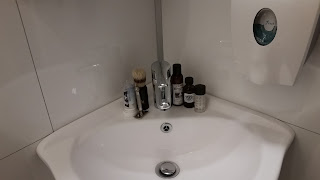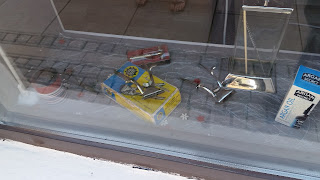Taken from a thread on my favourite shave forum:
Alum is alum.
Yes, but also no.
Finding the relevant posts would mean going back in the archives a few years, but the key take away is as follows:
- Alum is both a class of chemical compounds and a specific chemical compound – much in the same way as salt*. The specific compound is potassium alum (aka potash alum, or potassium aluminum sulfate), with the chemical formula KAl(SO4)2. More widely, alums are double sulfate salts, with the general formula AM(SO4)2·12H2O, where A is a monovalent cation such as potassium or ammonium and M is a trivalent metal ion such as aluminum or chromium(III).
- Potassium alum is a naturally occurring compound, which in the past was obtained from alunite, a mineral mined from sulfur-containing volcanic sediments source. Historically it’s been used as a natural deodorant, and as an astringent/styptic and antiseptic – in addition to the use for tanning, dyeing, clarifying liquids, fire retardant, and pickling.
- Other alums such as soda alum, ferric alum, and ammonium alum are manufactured, and can be used for many if not all of the things naturally occurring alum is used for. However; since these are different chemical compounds, they will vary in toxicity, taste, skin feel and other properties**.
- The most common alums used when shaving is potassium alum and somewhat less commonly ammonium alum (aka ammonium aluminium sulfate). The later is sometimes considered inferior, since most shavers feels that it stings more. There is also been claims that there is a link between the use of ammonium alum and dementia, however I have found no solid studies in the field after a brief look.
TL:DR? Stick with potassium alum, but don’t freak out about it.
* ) By salt we commonly mean sodium chloride, but salt is also a class of ionic compound that results from the neutralization reaction of an acid and a base.
** ) Much like lead diacetate is wildly different from ordinary table salt in taste (it’s sweet) and toxicity (it’ll give you lead poisoning).
***) Too Long – Didn’t Read. Said whenever a nerd makes a post that is too long to bother reading.













